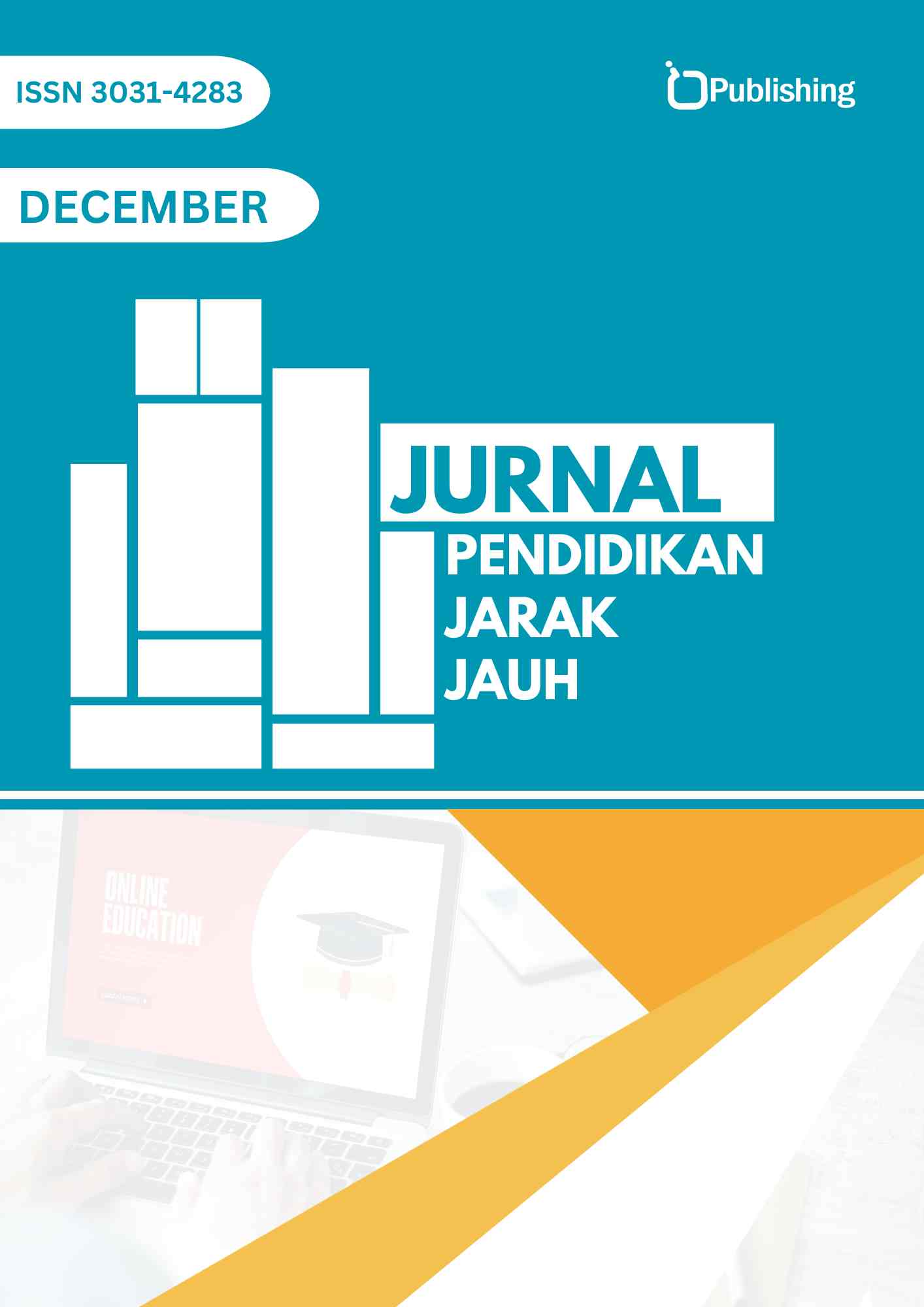Blended Learning Models: Combining Traditional and Digital Approaches
DOI:
https://doi.org/10.47134/jpjj.v1i2.255Keywords:
modern higher education, online education, blended learning, distance learning, flipped classroom modelAbstract
This article elucidates the identification of the most efficacious innovative methods and technologies within the contemporary higher education system. It underscores the significance of electronic education at the tertiary level and delves into the concept of blended learning along with its diverse models, as articulated by various local and international scholars in the existing literature. Additionally, the article explores the integration of cutting-edge technologies to enhance pedagogical approaches, fostering a dynamic and engaging learning environment. It delves into the pivotal role of electronic education in meeting the evolving needs of students, preparing them for the challenges of the digital era. Furthermore, the discussion delves into the diverse models of mixed education, offering a comprehensive overview of the strategies proposed by both local and international scholars in educational literature.
References
Alqraini, F. M. (2021). Distance Education for d/Deaf and Hard of Hearing Students during the COVID-19 Pandemic in Saudi Arabia: Challenges and Support. Research in Developmental Disabilities, 117. https://doi.org/10.1016/j.ridd.2021.104059 DOI: https://doi.org/10.1016/j.ridd.2021.104059
Al-Samarraie, H. (2019). A scoping review of videoconferencing systems in higher education: Learning paradigms, opportunities, and challenges. International Review of Research in Open and Distance Learning, 20(3), 121–140. DOI: https://doi.org/10.19173/irrodl.v20i4.4037
Deveci, H. (2022). THE BUTTERFLY EFFECT OF THE DISTANCE LEARNING MA PROGRAM ON CHARACTER AND VALUE EDUCATION AT ANADOLU UNIVERSITY. Turkish Online Journal of Distance Education, 23, 76–96. https://doi.org/10.17718/tojde.1096245 DOI: https://doi.org/10.17718/tojde.1096245
Doo, M. Y. (2020). MOOC instructor motivation and career development. Distance Education, 41(1), 26–47. https://doi.org/10.1080/01587919.2020.1724770 DOI: https://doi.org/10.1080/01587919.2020.1724770
Faisal, P. (2020). Information and communication technology utilization effectiveness in distance education systems. International Journal of Engineering Business Management, 12. https://doi.org/10.1177/1847979020911872 DOI: https://doi.org/10.1177/1847979020911872
Fırat, M. (2018). Level of intrinsic motivation of distance education students in e-learning environments. Journal of Computer Assisted Learning, 34(1), 63–70. https://doi.org/10.1111/jcal.12214 DOI: https://doi.org/10.1111/jcal.12214
Flanagan, B. (2018). An automatic method to extract online foreign language learner writing error characteristics. International Journal of Distance Education Technologies, 16(4), 15–30. https://doi.org/10.4018/IJDET.2018100102 DOI: https://doi.org/10.4018/IJDET.2018100102
Foo, C. c. (2021). A comparative study regarding distance learning and the conventional face-to-face approach conducted problem-based learning tutorial during the COVID-19 pandemic. BMC Medical Education, 21(1). https://doi.org/10.1186/s12909-021-02575-1 DOI: https://doi.org/10.1186/s12909-021-02575-1
Hilburg, R. (2020). Medical Education During the Coronavirus Disease-2019 Pandemic: Learning From a Distance. Advances in Chronic Kidney Disease, 27(5), 412–417. https://doi.org/10.1053/j.ackd.2020.05.017 DOI: https://doi.org/10.1053/j.ackd.2020.05.017
Istijanto. (2021). The effects of perceived quality differences between the traditional classroom and online distance learning on student satisfaction: evidence from COVID-19 pandemic in Indonesia. Quality Assurance in Education, 29(4), 477–490. https://doi.org/10.1108/QAE-08-2020-0098 DOI: https://doi.org/10.1108/QAE-08-2020-0098
Karataş, T. Ö. (2020). Sustaining language skills development of pre-service EFL teachers despite the COVID-19 interruption: A case of emergency distance education. Sustainability (Switzerland), 12(19). https://doi.org/10.3390/su12198188 DOI: https://doi.org/10.3390/su12198188
Lux.uz - Law of the Republic of Uzbekistan, No. ORQ-637 of 23.09.2020
Özdoğan, A. Ç. (2020). The Examination Of Stakeholders’ Opinions On Distance Education During The Covid-19 Epidemic. Milli Egitim, 49(1), 13–43. https://doi.org/10.37669/milliegitim.788118 DOI: https://doi.org/10.37669/milliegitim.788118
Putra, A. B. N. R. (2021). The Innovation of Disruptive Learning Media with Augmented Reality Based 3D Object Concept with Drill Machine Design to Improve Quality of Distance Learning in The Era of Education 4.0. International Journal of Interactive Mobile Technologies, 15(12), 193–200. https://doi.org/10.3991/ijim.v15i12.21579 DOI: https://doi.org/10.3991/ijim.v15i12.21579
Zeichner, O. (2019). The relationship between extrovert/introvert attributes and feedback on students’ achievements. International Journal of Distance Education Technologies, 17(2), 1–17. https://doi.org/10.4018/IJDET.2019040101 DOI: https://doi.org/10.4018/IJDET.2019040101
Downloads
Published
How to Cite
Issue
Section
License
Copyright (c) 2024 Ablyakimova Refide, Toshpulatova Ismigul

This work is licensed under a Creative Commons Attribution 4.0 International License.










